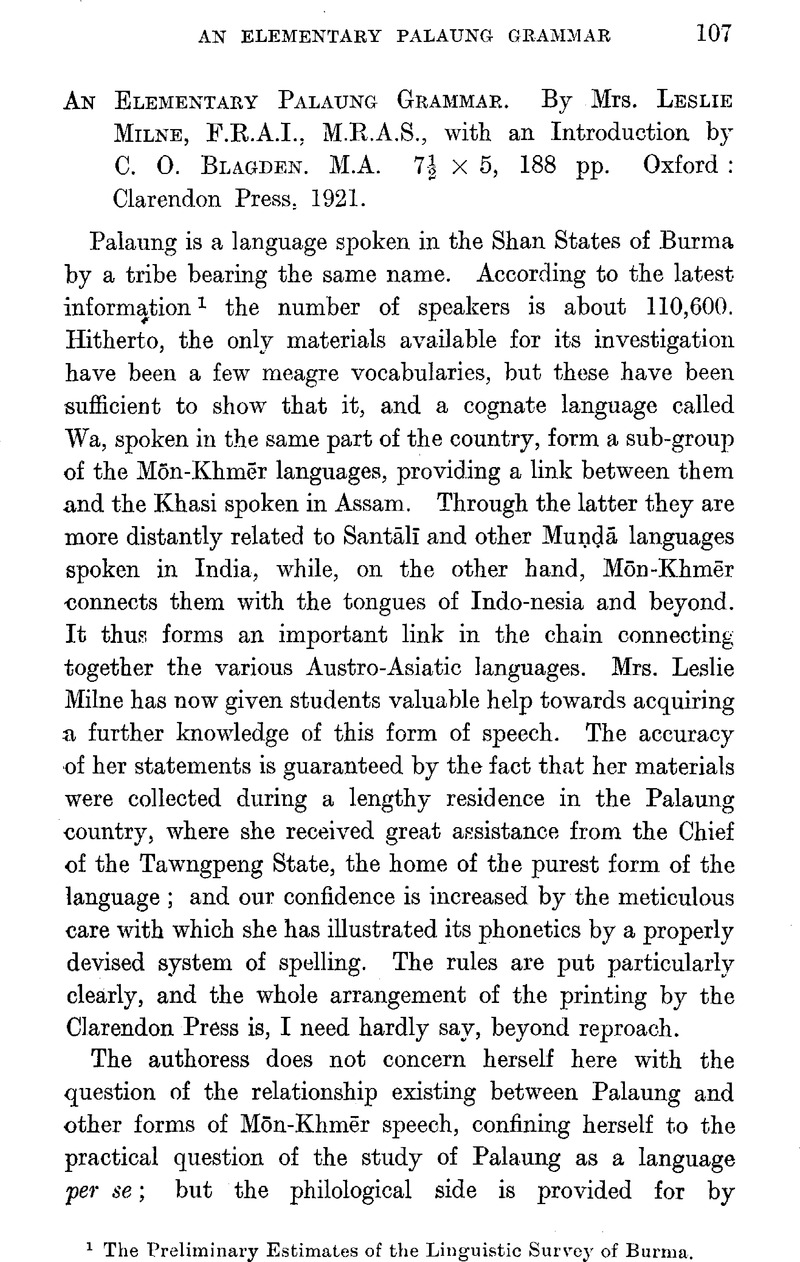No CrossRef data available.
Published online by Cambridge University Press: 15 March 2011

page 107 note 1 The Preliminary Estimates of the Linguistic Survey of Burma.
page 108 note 1 It must be understood that the so-called “checked” final consonants common in Burmese and Tai and corresponding to the Cantonese “entering tone”, and, less closely, to the glottal check also called “entering tone” of Southern Mandarin, are not properly tones at all (vide JRAS. 1920, p. 459)Google Scholar. The Mōn - Khmēr languages have these. I would take this opportunity of correcting a mistake of my own. In 1904 I was not aware that the “entering tone” was not a tone, and in the account of Khasi in the Linguistic Survey (Vol. ii, p. 7) I wrongly stated that that language possessed tones. It has none, though many of its words end in a glottal check. See Maspero, G., Grammaire de la Langue ![]() mère, p. 21.Google Scholar
mère, p. 21.Google Scholar
page 108 note 2 It would be an interesting task for some student of the languages of Farther India to discuss how far the Mōn-Khmēr vowel sounds are connected with, or influenced by, the tones of the Sinitic languages. In Tai, for instance, initial aspirated surds, sibilants, and h naturally give a word a mid-rising tone, and the unaspirated surds give it a mid-level tone. In Mōn and Khmēr there are similar divisions of the consonants, which relate, not to tone, but to the inherent vowel.
page 109 note 1 Die Mon- Khmer- Völker, p. 16Google Scholar. When an affix-less genitive precedes the qualified substantive, postpositions are used, and vice versa.
page 109 note 2 i.e. the order of thought. Considering the variations in word-order found in the different Indo-Chinese languages, this suggests ethnological questions which are usually barred from philology.